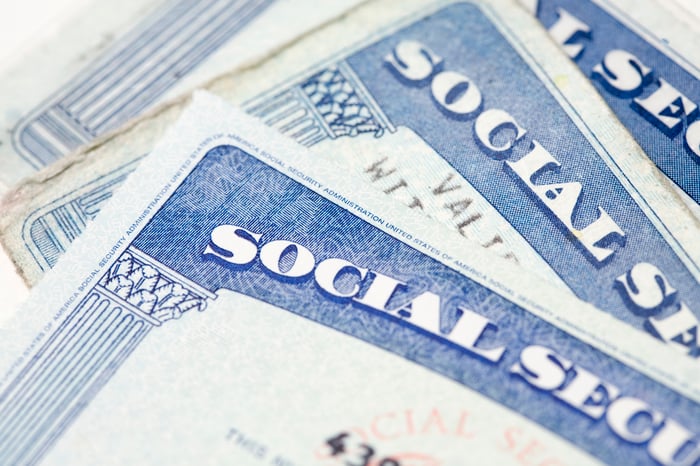Key Points
-
Social Security relies on payroll tax revenue to stay afloat.
-
There’s a wage cap, set each year, which determines how much income is taxed to fund the program.
-
Social Security’s wage cap is likely to rise in 2026, which means higher earners will have to shell out more money.
Just because you’re not getting Social Security right now doesn’t mean it’s not something to think about. Even if you’re years away from retirement, changes to Social Security could impact you.
For one thing, Social Security may be forced to cut benefits broadly in the future if lawmakers don’t find a way to address the program’s pending revenue shortfall. That could leave you with less retirement income, so it’s something to plan for.
Where to invest $1,000 right now? Our analyst team just revealed what they believe are the 10 best stocks to buy right now. Continue »

Image source: Getty Images.
It’s also important to understand where Social Security gets its money from, and how a big change might affect you in the new year. Let’s dive into how Social Security is funded and why it’s something you should care about.
How Social Security gets funded
Social Security gets the majority of its funding from payroll taxes. Taxing benefits also provides the program with income, as do the investments in its trust funds. But most of its revenue comes from taxed wages. This is actually the reason that Social Security (thankfully) cannot fully run out of money.
If you take a look at your pay stub and see a line item for FICA (Federal Insurance Contributions Act), that money is going toward Social Security. Employees pay 6.2% of their earnings toward Social Security, up to a certain point, with employers kicking in another 6.2% for a total of 12.4%. Self-employed folks have to pay both the employee and employer portions.
One big 2026 Social Security change you need to look out for
Paying Social Security taxes is something you may be resigned to. However, it’s not a given that you’ll pay them on all of your income.
Each year, a wage cap is established to determine how much income will be taxed for Social Security. This year, that cap is $176,100.
But next year, Social Security’s wage cap is likely to increase in accordance with wage growth. This means that higher earners could lose a larger chunk of their income to help fund the program.
How much higher will the Social Security wage cap get? The program’s trustees projected a few months ago that 2026’s wage cap will reach $183,600.
However, that’s just an estimate, and the number isn’t set in stone. Social Security won’t be able to make its new wage cap official until mid-October, when a 2026 cost-of-living adjustment (COLA) should also be announced.
Of course, a higher wage cap is only a problem for people who earn enough money for this change to affect them. But it’s something to prepare for if you’re a higher earner who also lives in a high-cost area and may be pinching pennies despite a decent paycheck.
You should also know that some lawmakers have proposed raising or even eliminating the Social Security wage cap, to help address the program’s funding shortfall. That’s not necessarily a change you have to worry about in 2026, but it could arrive in the future.
Either way, the program’s wage cap is almost guaranteed to rise in the new year. So that’s something you may want to brace for, and perhaps work with a tax professional to minimize the blow.
The $23,760 Social Security bonus most retirees completely overlook
If you’re like most Americans, you’re a few years (or more) behind on your retirement savings. But a handful of little-known “Social Security secrets” could help ensure a boost in your retirement income.
One easy trick could pay you as much as $23,760 more… each year! Once you learn how to maximize your Social Security benefits, we think you could retire confidently with the peace of mind we’re all after. Join Stock Advisor to learn more about these strategies.
View the “Social Security secrets” »
The Motley Fool has a disclosure policy.






